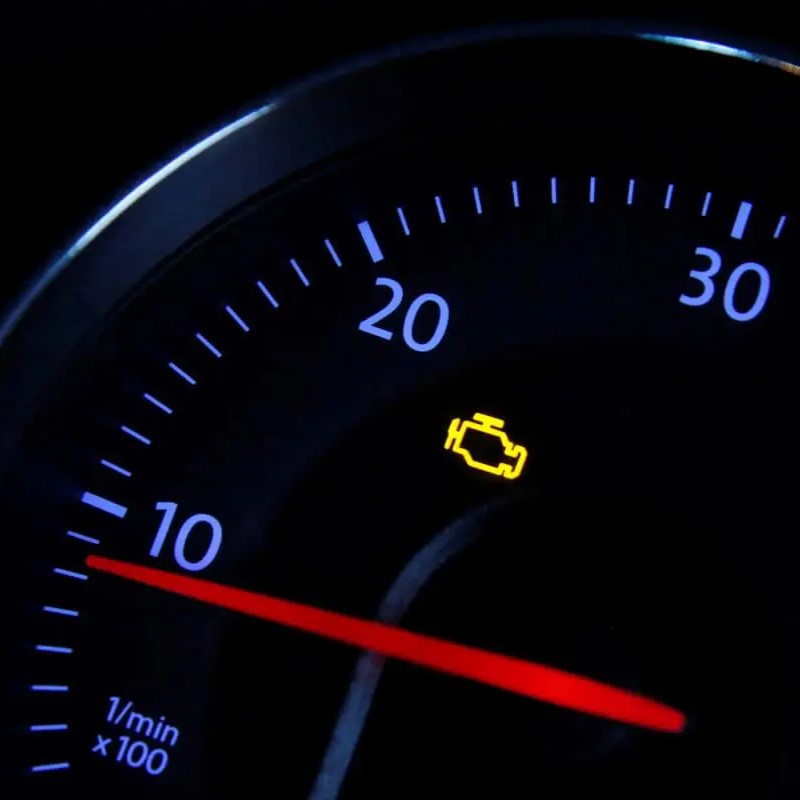The dashboard of your car is a complex landscape of warning lights, each with a specific message. But few are as anxiety-inducing as the illumination of the battery light. This instantly recognizable symbol, often a red silhouette of a battery, sends shivers down the spines of even the most seasoned drivers.
However, before you panic and pull over, understanding what the battery light means and the potential causes can empower you to make informed decisions.
What Does the Battery Light Mean?
Contrary to popular belief, the battery light doesn’t necessarily indicate a failing battery itself. Instead, it signifies a problem within your car’s electrical system, specifically the charging system. This system works in tandem: the alternator generates electricity, which is then stored in the battery. The battery, in turn, supplies power to your car’s electrical components when the engine is off or when the alternator isn’t producing enough juice.
So, when the battery light flickers on, it’s the car’s way of saying, “Hey, something’s wrong with how I’m generating or storing electricity!”

Common Causes of a Lit Battery Light
While a lit battery light can be unnerving, there are several possible culprits, some more serious than others. Let’s delve into the most frequent causes:
-
Loose or Corroded Battery Cables: These connections act as the highways for electricity to flow between the battery, alternator, and other electrical components. Over time, these cables can become loose or corroded, hindering proper current flow. This can trigger the battery light, even if the battery itself is healthy.
-
Faulty Alternator: The alternator is the heart of your car’s charging system. If it malfunctions, it won’t be able to generate enough electricity to keep the battery charged. This ultimately leads to the battery light illuminating.
-
Worn-Out Battery: While less common, a failing battery can also cause the light to come on. Batteries have a lifespan, and as they age, their capacity to hold a charge diminishes. If your battery is nearing the end of its life, it may not be able to store enough power from the alternator, triggering the warning light.
-
Broken Serpentine Belt: Modern cars use a single belt, often called the serpentine belt, to drive multiple engine accessories, including the alternator. If this belt snaps, the alternator won’t spin, and consequently, it can’t generate electricity. This scenario will also illuminate the battery light.

What to Do When Your Battery Light Comes On
If your car’s battery light illuminates, here’s what you should do:
-
Pull Over Safely: If possible, find a safe place to pull over as soon as it’s practical. A lit battery light indicates a potential electrical issue, and continued driving could lead to a complete loss of power, leaving you stranded.
-
Turn Off Non-Essential Electronics: This helps conserve the remaining battery power and may allow you to limp to a mechanic or safe haven. Turn off the air conditioning, radio, and any other unnecessary electrical components.
-
Visually Inspect the Battery: Pop the hood and take a quick look at the battery. Look for signs of corrosion on the cable terminals, which appear as a white, crusty buildup. You can also check if the cables are loose or appear damaged.
Getting Help
If you’re comfortable and have the tools, you can attempt to tighten loose battery cables or clean mild corrosion. However, for most drivers, seeking professional help is the wisest course of action. Here are your options:
-
Call a Tow Truck: If you’re concerned about driving or unsure of the cause, calling a tow truck is the safest option. This will get your car to a mechanic who can diagnose the problem.
-
Drive to a Mechanic (with Caution): If the battery light just came on and your car seems to be running okay, you might be able to drive to a nearby mechanic shop. However, proceed with caution and avoid unnecessary electrical strain. Turn off air conditioning and other electronics, and limit your driving distance.
Prevention is Key
While a lit battery light can be stressful, there are steps you can take to prevent it:
-
Scheduled Maintenance: Regular car maintenance checks often include inspecting the battery and charging system. This proactive approach can identify potential issues before they cause a breakdown.
-
Clean the Battery Terminals: Periodically clean the battery terminals to remove any buildup of corrosion. This ensures a good electrical connection.
-
Replace the Battery: Batteries don’t last forever. Typically, they have a lifespan of 3-5 years. Consulting your owner’s manual [owner’s manual] will provide the recommended replacement interval for your specific car model. Consider replacing the battery before it shows signs of weakness to avoid getting caught off guard.

Driving with a Lit Battery Light
The decision of whether or not to drive with a lit battery light depends on the severity of the situation. Here’s a breakdown:
-
If the light just came on, and your car seems to be running normally: You might be able to cautiously drive to a nearby mechanic shop. Turn off any non-essential electronics like the air conditioning and radio to conserve battery power. However, if the distance is significant, consider calling a tow truck.
-
If the battery light is accompanied by other symptoms: This could indicate a more serious problem. For instance, flickering headlights, dimming interior lights, or strange electrical behavior are all red flags. In such cases, don’t risk driving and call for roadside assistance.
-
If the car starts exhibiting difficulty starting or stalling: Pull over immediately and turn off the engine. Do not attempt to restart it. A complete loss of power is imminent, and you risk further damage by continuing to drive. Call for a tow truck.
Remember: Safety is paramount. When in doubt, err on the side of caution and seek professional help.
Minimizing unnecessary power usage to reduce strain on the battery
Our devices, from laptops to smartphones, rely on batteries for their on-the-go functionality. But batteries have a finite lifespan, and maximizing their efficiency is crucial. Here’s how to minimize unnecessary power usage and extend your battery life:
Screen Power:
- Dim the Brightness: Screens are often the biggest battery drainers. Lowering the brightness significantly reduces power consumption without sacrificing usability. Most devices offer automatic brightness adjustment, which adapts to ambient light.
- Reduce Screen Timeout: The amount of time your screen stays lit after inactivity is crucial. Shorten the screen timeout to minimize unnecessary power usage when the device is idle.
Background Activity:
-
Close Unused Apps: Many apps quietly run in the background, even when minimized. Shutting down unused apps frees up resources and reduces battery drain.
-
Background App Refresh: This feature allows apps to update content in the background, even when not actively used. Consider disabling it for apps that aren’t time-sensitive, like social media.
Connectivity:
- Wi-Fi vs. Cellular Data: Cellular data usage consumes more battery than Wi-Fi. Whenever possible, connect to a Wi-Fi network to conserve battery life.
- Bluetooth and Location Services: These features, while convenient, can be battery hogs. Disable them when not in use, especially Bluetooth, which constantly searches for nearby devices.
The Takeaway
A lit battery light is a warning sign, not a death sentence for your car. By understanding what it means, the potential causes, and the appropriate actions to take, you can navigate this situation with confidence. Remember, routine maintenance and preventive measures can go a long way in preventing a lit battery light and keeping you on the road.





